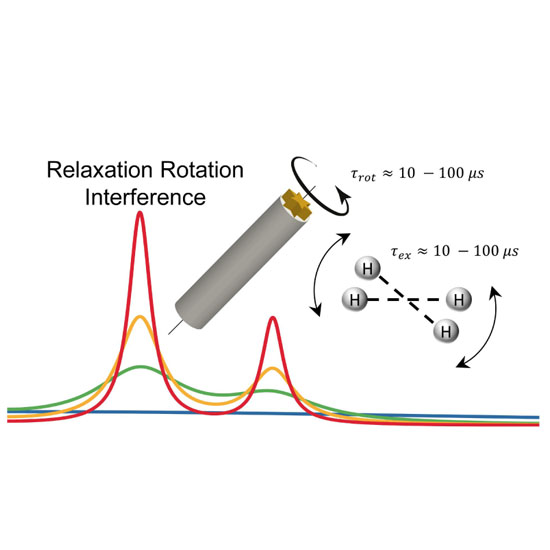Microsecond Time Scale Proton Rotating-Frame Relaxation under Magic Angle Spinning
23-May-2017
J. Phys. Chem. B, 2017, 121 (25), pp 6117–6130, DOI: 10.1021/acs.jpcb.7b03333
J. Phys. Chem. B., online article
This paper deals with the theoretical foundation of proton magic angle spinning rotating-frame relaxation (R1ρ) and establishes the range of validity and accuracy of the presented approach to describe low-amplitude microsecond time scale motion in the solid state. Beside heteronuclear dipolar and chemical shift anisotropy interactions, a major source of relaxation for protons is the homonuclear dipolar interaction. For this latter relaxation process, no general analytical equation has been published until now, which would describe the R1ρ relaxation at any spinning speed, spin-lock field, or tilt angle. To validate the derived equations, we compared the analytical relaxation rates, obtained by solving the master equation within the framework of Redfield theory, with numerically simulated relaxation rates. We found that for small opening angles (∼10°), the relaxation rates obtained with stochastic Liouville simulations agree well with the analytical Redfield relaxation rates for a large range of motional correlation times. However, deviations around the rotary-resonance conditions highlight the fact that Redfield treatment of the solid-state relaxation rates can only provide qualitative insights into the microsecond time scale motion.











